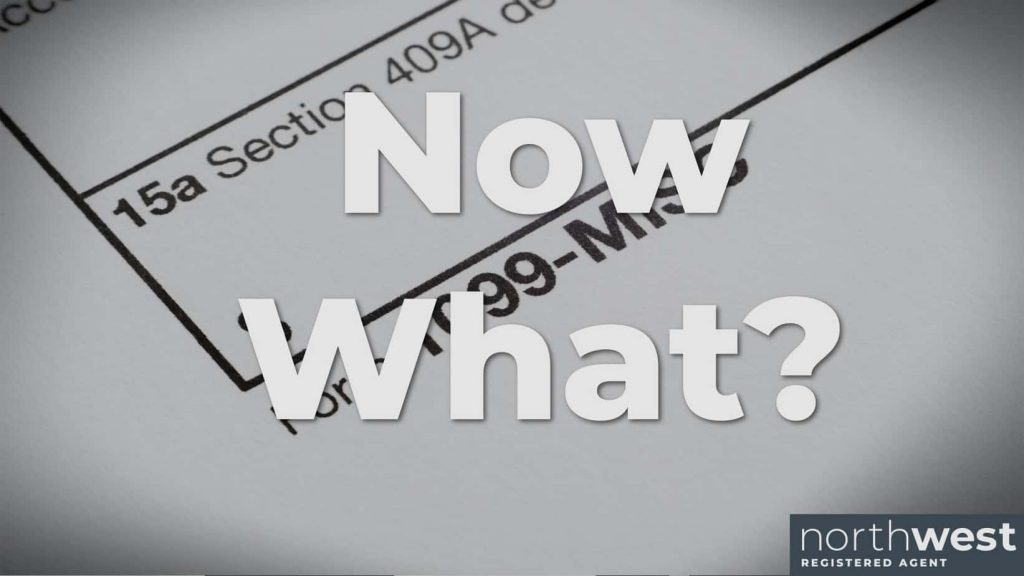I Forgot To Send My Contractors A 1099-MISC… Now What?
Most employers are used to getting W-2s out to their employees by the end of January. However, it’s not just employees who are waiting by the mailbox this time of year. The independent contractors that provided you services during the year most likely need a form of their own by the end of January as well—a 1099-MISC.
What is a 1099-MISC?
There are many different 1099s, but the first 1099 most small businesses encounter is the 1099-MISC. A 1099-MISC is an IRS information form that you must send to non-employees to whom you’ve paid at least $600 over the course of the year.
Not everyone who does work for you is an employee. It’s common to contract out specific services from people such as attorneys, bookkeepers, consultants, designers, developers, interpreters, and skilled trade workers like electricians or painters.
Not sure if someone is an employee or a contractor? An independent contractor is essentially a small business—they likely have other clients, advertise their services, set their own hours, use their own tools or equipment, send invoices for their work, and may even have employees of their own. Contractors don’t receive employee benefits from your business such as training, health insurance or sick pay.
It’s important to note that the IRS does not look favorably upon employers sending 1099s to workers who should really be classified as employees. Because businesses don’t have to pay the usual employment taxes on non-employees, the IRS is always on the watch for employers who are trying to skip out on taxes by misclassifying employees as contractors. Misclassification is subject to penalties, so if you’re unsure, it’s a good idea to consult an employment or tax specialist.
What are the deadlines for filing a 1099-MISC?
January 31st. By this date, you’ll need to have to submitted your 1099-MISC both to your contractors AND to the IRS. Mailed filings just need to be postmarked by January 31st, not necessarily received.
First, you’re required to send 1099-MISCs directly to your contractors. While these can be sent electronically, recipients have to first agree to receive them electronically, so it may be easier to send these by mail, especially if you’re getting down to the wire. You can download and print the form you need (Copy B of 1099-MISC) from the IRS website.
Next, you must submit your 1099-MISCs to the IRS. You’ll need to either file online or order the forms you need (Copy A of 1099-MISC and Form 1096). Unlike many other IRS forms, these forms can’t be downloaded directly from the IRS website; they have to be requested.
Form 1096 is just a transmittal form you send along with your 1099-MISCs—essentially a cover sheet. You only need to file one 1096 with all your 1099-MISCs that report nonemployment compensation in Box 7. This helps both you and the IRS avoid having to worry about tons of separate filings. (If some of your 1099-MISCs don’t report nonemployment compensation in Box 7, or if you have other kinds of 1099s besides 1099-MISCs, you’ll likely need additional 1096s.)
Note that you’ll need your contractors’ taxpayer identification numbers (TINs)—such as social security numbers or EINs—to complete your 1099-MISCs. To get your contractors’ TINs, you can send them a W-9 Request for Taxpayer Number and Certification. If you have to wait for contractors to return W-9s, filing your 1099-MISCs will take substantially longer. So, if you haven’t already, it can be useful to get into the habit of sending W-9s when contracting services or receiving invoices.
How long does it take to file a 1099-MISC?
Like all IRS filings, it depends on how prepared you are. On the plus side, 1099-MISC is relatively short, and many filers only need to complete the general information and Box 7 (the amount of non-employee compensation). You may be able to complete your 1099-MISC in just a few minutes if you’re pretty tax savvy and have everything you need at hand. The transmittal form is even shorter, requiring very little information.
On the downside, your 1099-MISC may still require a fair amount of time to prepare, particularly if you’re doing it for the first time, if you need to order forms or create an online filing account, if you haven’t yet acquired your contractors’ TINs, if your records aren’t in order, or if you have many 1099s to file.
Can I get an extension?
If you’re running out of time to submit—but it hasn’t quite hit the deadline yet—you can request an extension. Actually, you’ll likely need to submit two extension requests: one for sending your 1099-MISCs to contractors and one for your IRS filing.
To get more time to send 1099-MISCs to contractors, you can send a letter to the IRS requesting an extension. Your letter must include the name, TIN, address, and signature of the payer, as well as the type of return, a statement that the extension is being requested to provide statements to recipients, and the reason for delay. You can send extension requests to:
Internal Revenue Service
Attn: Extension of Time Coordinator
240 Murall Drive, Mail Stop 4360
Kearneysville, WV 25430
Your letter has to be postmarked by January 31st. If approved, you won’t get much more time—no more than 30 days—but it should be enough.
To get more time for your IRS filing, you can file Form 8809 for an automatic 30-day extension. Again, you must file your extension request by January 31st.
What happens if I miss the deadline?
The short answer is that you’ll pay a fine. How much of a fine depends on what you do next.
If you file late but within 30 days, the penalty is $50 per return. If you file more than 30 days late but before August 1st, the penalty is $100 per return. File later than that or not at all? The penalty is $260 per return.
However, if the IRS determines that you have intentionally disregarded this filing, the penalty increases to a staggering $530 per return. In some cases of intentional disregard, the IRS can also tack on additional penalties. Ouch.
The bottom line is that if you’re cutting it close to the 1099-MISC deadline, file for an extension. If you’ve already missed the deadline, get your filing in ASAP for lower penalties. And next year, make sure you have everything you need—from TINs to forms—before January rolls around.
Have more business questions?
We have answers. In addition to loads of free forms and resources, we also offer a variety of services to help you maintain your business, from business renewal to registered agent service.

